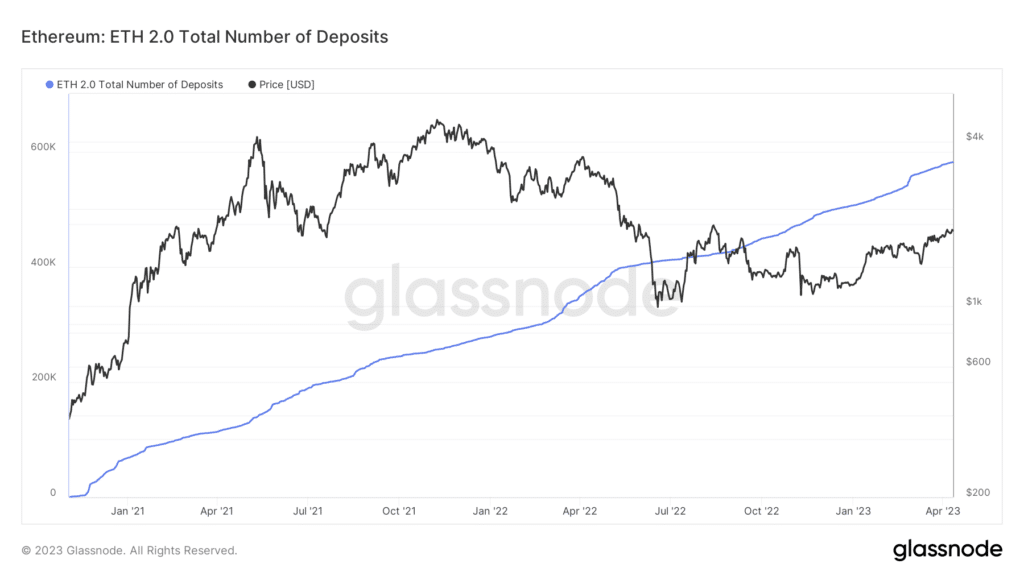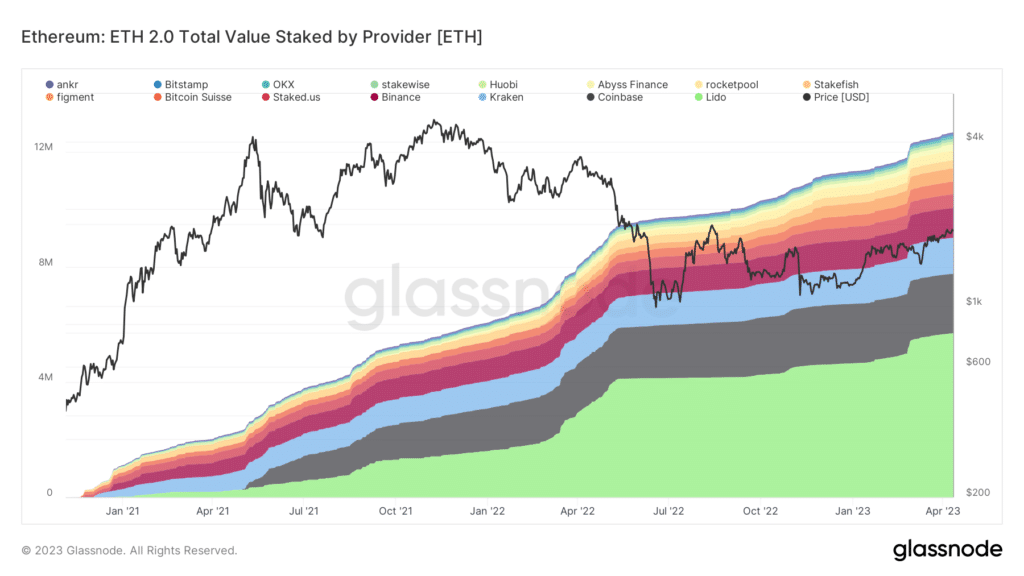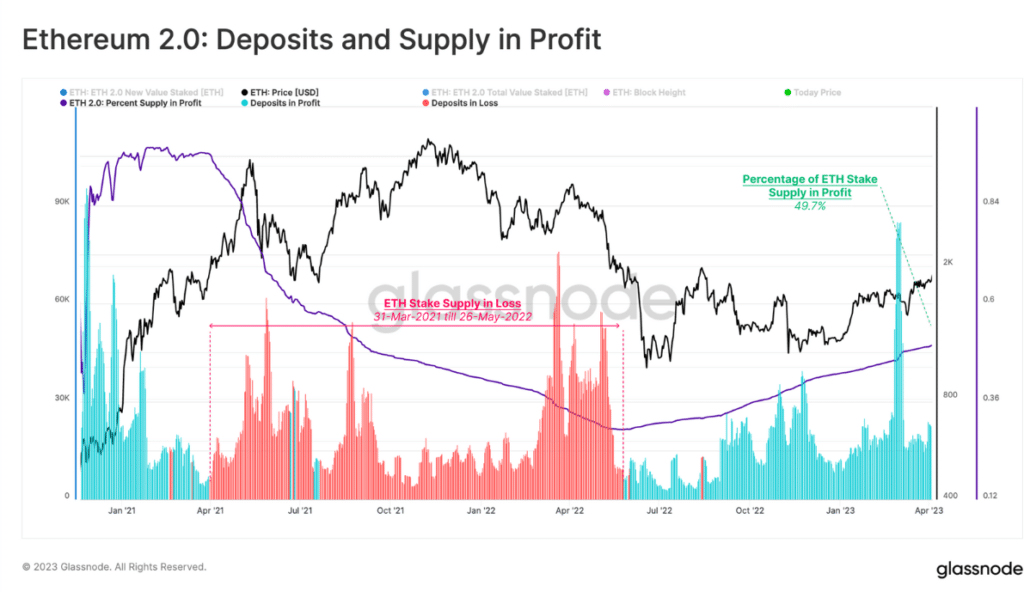The crypto community is abuzz with the latest news: tonight there will be the actual implementation of the Shanghai update on the blockchain of Ethereum and consequently about 18 million ETH, previously staked by users, will be unlocked.
How many ETH are about to be sold? Will there be a collapse in the price of Ethereum?
All the details below.
Summary
The Shanghai update for Ethereum: all the news
The Shanghai/Capella (or Shapella) hard fork is scheduled for tonight and will officially and definitively sanction the transition from the Proof-of-Work (PoW) to Proof-of-Stake (PoS) distributed consensus mechanism for the Ethereum blockchain.
It effectively closes a cycle that began with the Merge, in which the Ethereum Mainnet merged with the Beacon Chain, ushering in an era of increased awareness regarding energy consumption, in line with ESG criteria.
In this delicate transition, there will be the unlocking of 18 million ETH that have been staked by users since November 2020 before the official launch of the Beacon Chain.
Indeed, those who decided to contribute to Ethereum’s security enhancement by staking ETH could no longer withdraw them, including accrued stake rewards.
This is a period of more than two years in which users have seen bull and bear market phases go through, hence there are conflicting assumptions about possible decisions by stakers: will they leave ETH in staking or withdraw them to sell them in the market?
It is worth mentioning that viewed superficially like this, the matter does not look very rosy for the short-term price of Ethereum, considering that 18 million ETH correspond to 15% of the circulating supply of ETH.
However, there are some very important considerations to be made.
First of all, it is not certain that all ETH will be sold instantly for stablecoins or converted to FIAT; quite the contrary, this is indeed impossible!
The next section will explain technically why this will not happen.
In the meantime, it is interesting to note that all the tokens in the protocols that provide a liquid version for staking Ethereum, such as Lido, Frax, and Rocket Pool, are experiencing a downward trend.
JUST IN:🚨 Liquid Staking tokens take a dip before #ETH Shanghai upgrade. #crypto #bitcoin pic.twitter.com/tHPFz4qcoI
— Crypto Macro (@cryptomacro14) April 12, 2023
On-chain metrics: news for Ethereum’s Shanghai update
Let’s try to take stock of the situation for this hard fork that will be implemented tonight. What figures are we talking about? Who are the main depositors?
To do this we will use data provided by Glassnode, an on-chain metrics platform.
Let’s first start by looking at an overview of the amount of ETH that has been staked progressively.
It is interesting to note that, even during the ETH price drop during the previous bear market, there was no slowdown in deposits on the platform.
It seems that the amount of ETH put into staking has been entered more or less steadily.
As of December 2020, about 900k ETH were staked, while as of today we are up to more than 18 million.

That said, it is worthwhile to check what the different sizes of depositors are.
This is because not all entities could put ETH in staking directly on the official platform, especially those with little capital.
Indeed, in order to deposit without intermediaries, it was necessary to have at least 32 ETH.
Hence, many “small fish” had to rely on third-party entities that did the work for them, aggregating several small deposits.
These include cryptocurrency exchange names such as Binance, Kraken, Okex and Coinbase and decentralized applications such as Lido and Frax.
In the early months of the Beacon Chain’s genesis, Binance and Kraken were the dominant depositors, while later the scepter passed into the hands of liquid staking platforms such as Lido.
However, Lido’s hegemony has declined over time, given also the stress that the St-ETH token (liquid version for stakers on Lido) faced during the collapse of UST and the bankruptcy of Celsius and Three Arrows Capital companies.

How many ETH are about to be sold?
We come to the most interesting and significant part of the Shanghai/Capella hard fork, which is the part where we estimate the selling pressure that will be caused by the release of coins staked on ETH 2.0 starting in November 2020.
In order to understand how many ETH are about to be brought to market by Ethereum stakers, it is crucial to identify with them and understand their financial nature.
Although this might seem somewhat difficult, there is actually a trick to at least understand whether their investment in ETH 2.0 results in profit or loss.
Generally those who exit a crypto using stablecoins do so only if they are in profit, preferring to wait to see whether the investment is generating unrealized losses.
In this case, it is curious to note that about half of all deposits on ETH 2.0 are currently at a loss according to current spot prices.

Taking into account this very important fact and the fact that many users who would have liked to sell ETH in these two and a half years have been able to do so anyway by trading liquid versions (albeit at a lower price of about 1%) we can deduce that the selling pressure will not be as terrible as many think.
According to estimates made by Glassnode, the range of ETH that will be immediately sold in the first week after Shanghai falls between 1.54 million ETH ($2.93 billion) and 170,000 ETH ($323 million).
Even in the worst-case scenario regarding these estimates, meaning that 1.54 million ETH will become liquid in the market, this is within the average weekly volumes recorded in the last period.
In essence, the decline could be as much as about 8.7% in the first week. However, it is worth remembering that this remains only an estimate (at worst) and that depending also on the performance of BTC, these values could vary.
For now it seems that ETH traders are not considering the selling pressure issue too seriously. ETH in the last 24 hours is down only 2.48%, and this brief decline may be the fault of panicked retail traders after superficially reading the news of the Shanghai update for Ethereum.
An interesting on-chain metric
As mentioned above, even assuming the most catastrophic of situations, it still remains IMPOSSIBLE that all 18 million ETH staked will be sold immediately tomorrow.
How is this impossible?
Simply because in addition to the mere depositors who have delegated their ETH on the ETH 2.0 platform, there are also the validators.
For these, it is important to note that only a limited number can exit per day and hence withdraw their ETH stake.
This is justified by the fact that the Ethereum blockchain must necessarily maintain the security of the infrastructure, and a stampede of all validators could seriously endanger it.
This daily number is defined by the abandonment rate, which determines both the allowed number of incoming and outgoing validators. The abandonment limit itself is related to the number of active validators in the staking pool.
Simplifying, no more than 1,800 validators per day will be allowed to withdraw their ETH for a total of 57,600 coins.





